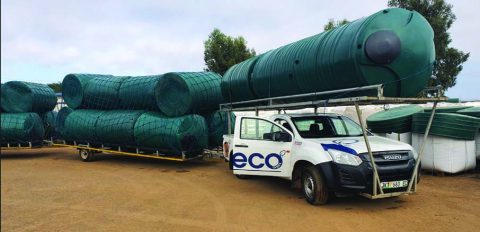SA Mining
The COVID-19 Influence On Mining Projects – Pandemonium Or Paradigm Shift?
By Albert Jacobs: Head of Project Development and Delivery at Ukwazi
Mining production in South Africa fell by about 28% year on year during the COVID-19 lockdown, as the industry’s large migrant workforce makes the mining environment particularly vulnerable to pandemics. In addition to the supply-side shock and product transport limitations, there were also demand-side effects such as reduced consumption, leading to declining revenues, collapsing commodity prices and capital outflows from emerging markets. Given these widespread changes, how has PDD been affected?
Priorities and pressures have transformed
The uncertainty associated with these conditions has had a major effect on construction projects in the mining industry, with stoppages or extensive delays being experienced. Inevitably, large mining companies have introduced capital expenditure cuts and put certain projects on hold until exchange rates and commodity prices become more favourable.
What’s more, feasibility studies have also been put on hold or are being re-evaluated against new economic criteria. In the base metals industry for instance, global capital expenditure is down by an average of 19% year on year according to S&P Global Market Intelligence.
Mining companies are therefore under pressure to get more value for limited funds and come up with solutions that will address the risks in the current and future environments. Similarly, consulting companies are equally challenged to find new ways of working where personnel movement and site access have been restricted.
According to the White & Case Mid-Year Mining and Metals Survey, big, diversified miners were in good financial shape at the start of 2020 and acted quickly to preserve cash at the start of the pandemic. Going forward, mining executives will focus on building resilience and growth, increasing productivity gains and efficiencies and prioritising environmental, social and governance performance, as critical components of their respective corporate strategies.
Processes and practicalities have transitioned
Although mining companies are likely to consolidate in order to access funding for continued projects and growth, consulting firms have had to become more flexible and innovative to respond to rapidly changing requirements. While being client-centred and having the right building blocks in place are imperative, the onset of lockdown has forced these companies to review and adjust their processes, accelerating the rate of adoption of new technologies and tools.
Of course, virtual meeting tools such as Microsoft Teams or Zoom have come to the fore, enabling organisations to engage with clients globally, or teams at remote locations without the need for face-to-face interaction. These platforms now form an even larger part of all communication on a daily basis with internal and external parties. However, while some companies are allowing individuals to work from home for extended periods, there is still (arguably) a need for direct contact, especially when new relationships are being formed or new team members are being added. Here, an initial understanding can be created, forming the basis for effective communication.
The need for paperless workflows is equally vital in managing a virtual office, and a cloud-based document management system becomes indispensable when managing revisions and approvals with an extended team. Firms that have managed to integrate electronic workflows with manual practices – to such an extent that all documentation can be managed without the need for any hard copies to be produced – will be the winners in the long run. This not only extends to the computer-aided design environment, where design reviews along with virtual walkthroughs can be conducted and comments can be added, but also to the use of drones for scanning surfaces or facilities, data analysis and geographic information system mapping.
These systems also allow for ongoing information management services, where consultancies are able to be the custodians of the initial information generated during concept development as part of a project information model, and are able to update clients throughout the project lifecycle.
Managing the asset information model also becomes more efficient, aiding client support during the operation and maintenance of specific assets.
Further to this, current available technologies make it possible to remotely manage and evaluate real-time data from facilities through internet of things devices, limiting the number of people on-site and travelling.
Partnerships and perceptions have been tweaked
The responsibility of helping clients in building resilience requires technical specialists to work more closely with clients than ever before. An in-depth understanding of key business drivers and objectives is essential to ensuring that appropriate solutions can be found from the enormous amount of data available. An effective way of achieving this is to allocate smaller, dedicated teams to communicate with specific clients to make sure that bi-directional knowledge transfer is enhanced and maintained. These specialists can then coordinate the response from the virtual team of consultants, and focus their efforts on the requirements identified.
To find innovative solutions, a questioning mindset and continued learning are important when making use of the proliferation of new ideas and technologies being developed globally. Even the traditional waterfall approach to project management for mining and minerals processing studies and projects is being reviewed, as some of the agile and lean project management methodologies practised in other industries allow for a more flexible and responsive approach.
Mining has always been an industry that finds a way to prosper, despite many challenges, and remains a cornerstone of the world’s economy and manufacturing capability. From contracts, procurement and logistics, to production, maintenance and growth projects, players have had to find ways to improve efficiencies and increase productivity to remain relevant in this new environment. Most sector experts agree that the pandemic, while causing some pandemonium, has actually paved the way for profitability as well as a significant shift in thinking and subsequent approaches. It is not only possible to survive the influence of COVID-19 on our sector, but with cooperation and commitment, those with an understanding of the paradigm shift and an appreciation of the benefits to be obtained from new technologies will remain sustainable and continue to thrive.







 Sign-up and receive the Business Media MAGS newsletter OR SA Mining newsletter straight to your inbox.
Sign-up and receive the Business Media MAGS newsletter OR SA Mining newsletter straight to your inbox.